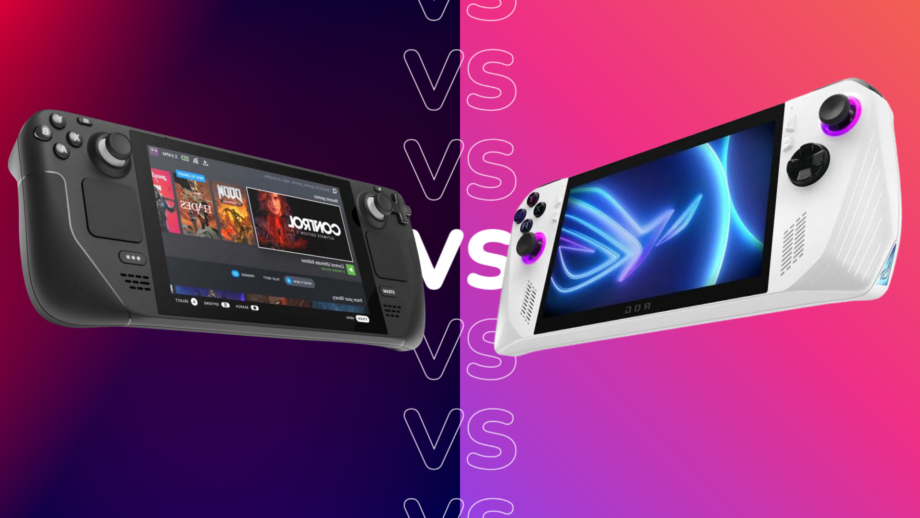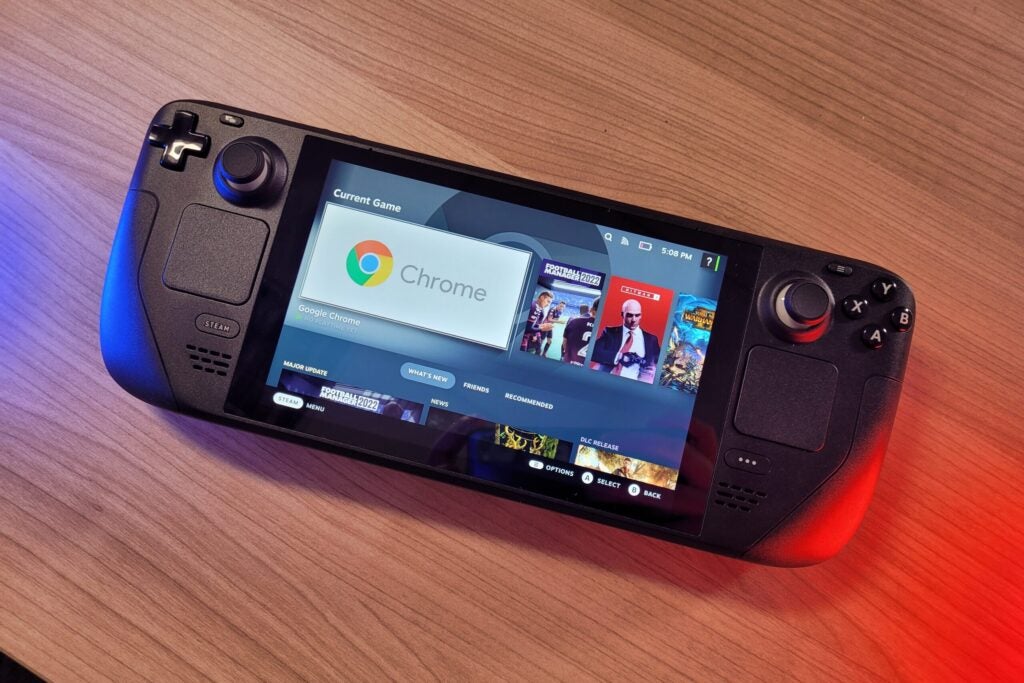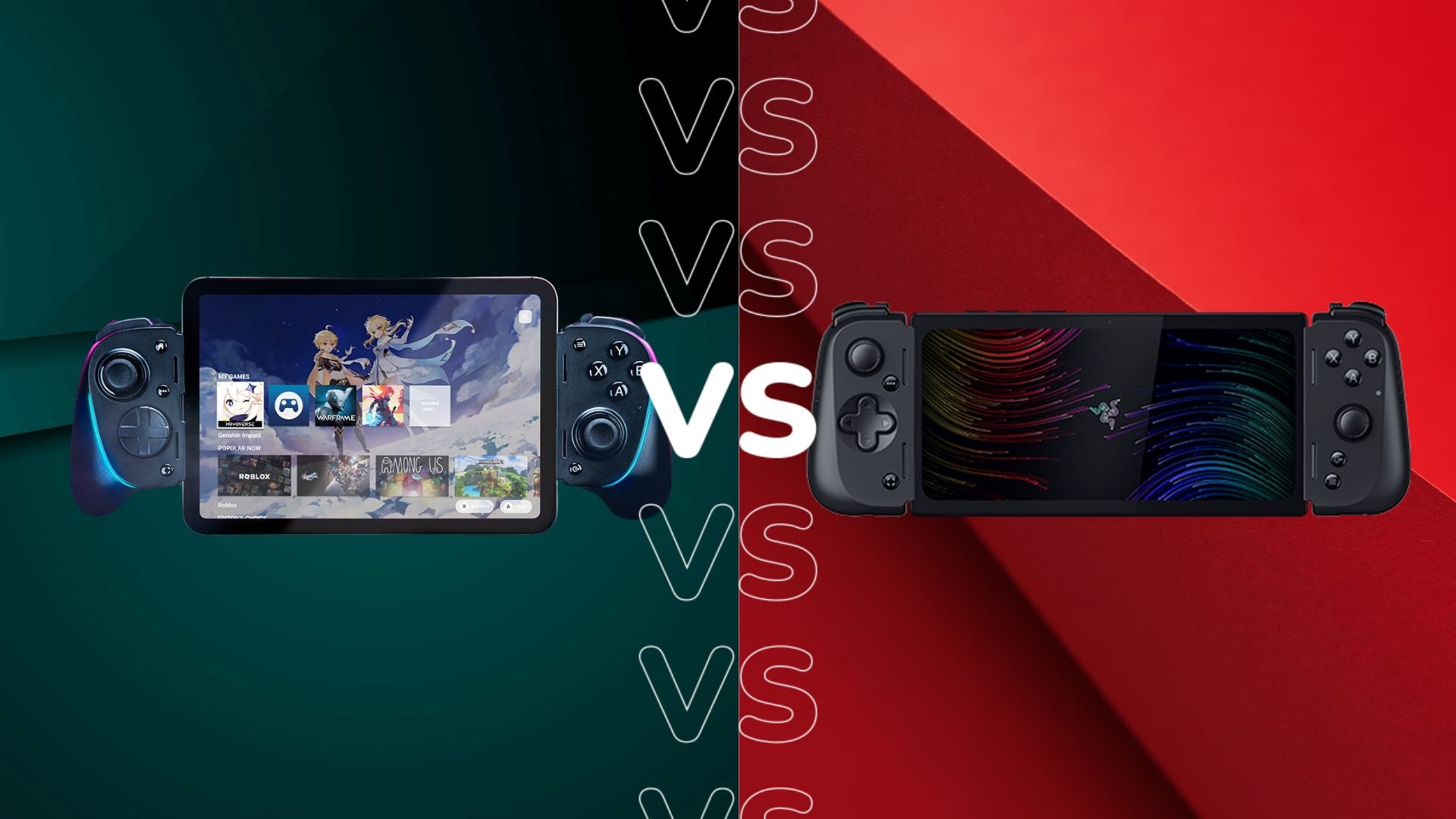Steam Deck vs Asus ROG Ally: Which gaming handheld is better?

The launch of the Asus ROG Ally is upon us and we’ve received the new handheld. The Steam Deck remains its key rivals so now, with the knowledge of thoroughly testing both these machines, we can put them head-to-head.
The Asus ROG Ally is the first serious competitor to Valve’s gaming handheld. But, as has been expected since some of its specs began to leak out, the price seriously hampers direct competition. The absence of a standard Ryzen Z1 Asus ROG Ally for a lower price as of yet further hampers the new handheld as a value proposition too.
Now that we’ve had the chance to review the Asus ROG Ally and the Steam Deck, and run those all-important benchmarks, we can help you form a clearer judgement on what device makes the most sense for you. Here are the key battlegrounds for ROG Ally vs Steam Deck.
The Asus ROG Ally is more powerful
The ROG Ally is undoubtedly more powerful than the Steam Deck. The reveal of the specifications of the AMD Ryzen Z1 series chips set the stage for Asus to smoke Valve’s rival. However, despite the ROG Ally still getting the W, the gap isn’t as big as you might think.
In Horizon Zero Dawn, at 720p, the ROG Ally managed 37fps up against the Steam Deck’s 32fps. The Asus ROG Ally can stretch to 46fps in its Turbo mode. The difference was even more marginal at 720p in Cyberpunk 2077, with 26fps for the Asus and 25fps for the Steam Deck. Again, the ROG Ally goes up further in Turbo mode, to 35fps this time.
The difference is far from a chasm, meaning other factors, like price, will still have a larger effect on your decision. It is also worth noting the Asus ROG Ally does have a higher ceiling to venture towards too though, with 1080p and a 120Hz refresh rate available to it.
ROG Ally is a step forward in design
Both devices are made of plastic but the Steam Deck was never intended to be an eye-catching device, while the bright white hue of the Asus ROG Ally, its more angular design and geometric patterns make for a much more attention-seeking device. A splash of RGB helps too.

There’s just something about holding the ROG Ally that feels better than wielding the Steam Deck too. The devices are similar sized but Asus has nailed weight distribution in a way that feels more comfortable, adding to the overall design triumph.
Steam Deck runs on SteamOS 3.0
The Steam Deck is unique to other gaming portables, as it uses SteamOS. This is an operating system created by Valve, and so is locked down to the Steam library and store. Since the Steam Deck runs on Linux, you are able to open a desktop mode to use handheld like a portable PC, but it’s not very user-friendly for those more accustomed to Windows.

Fifa 23 with DualSense Controller Bundle
The perfect bundle for any football fans out there as it nabs you an extra DualSense controller to enjoy some multiplayer fun.
- Argos
- Lowest Price Yet
- Now £69.99
Speaking of which, the Asus ROG Ally runs on Windows 11, allowing for more flexibility in terms of software. You’ll be able to use a browser just like a standard laptop or desktop or even load up apps such as Game Pass and GeForce Experience.
Asus has also created a custom version of its Armoury Crate app which should load up by default, allowing you to boot up games and alter settings easily. Although it may not be quite as slick as SteamOS or the Nintendo Switch interface. We’ll have to wait for testing to find out.
The Steam Deck has touchpads
The Asus ROG Ally has a largely similar control setup as the Steam Deck. Both feature dual analogue sticks, a D-pad, shoulder buttons and triggers, front-facing buttons and even back buttons – although the Steam Deck has an extra pair of the latter.

Not much separates the two in terms of inputs then, but those who like trackpads may be sad to see them omitted on the ROG Ally. The Steam Deck’s trackpads aren’t quite precise enough to replace a gaming mouse for controlling first-person shooters and the like, but we still found them fairly useful for menu navigation in the likes of Football Manager.
There isn’t a big difference for ports either, both sporting a microSD card slot for storage expansion and a headphone jack. The ROG Ally boasts a slight advantage with a fingerprint sensor though, which could come in handy for logging into Windows.
The ROG Ally also has a connection port for Asus’ XG mobile GPU, which is an external graphics solution that can boost performance even further. This doesn’t come with the Ally, and is a very expensive accessory, but is still nice to have the option.
Asus ROG Ally is more expensive
Now the Asus ROG Ally is fully launched, we know the pricing coming in at £699/$699/€799 for the AMD Ryzen Z1 Extreme version. That’s a lot more than the £349 base Steam Deck and, even, a decent jump up from the top of the range £569 version. The difference is significant enough that your budget will likely be the biggest deciding factor for you here.
The cheaper Asus ROG Ally with the standard Ryzen Z1 chip has not launched alongside its higher-powered equivalent, but we do know it’ll be coming to the US in Q3 for $599. No word on other regions. That model could be pivotal in aligning this device more closely with the high-end Steam Deck.







